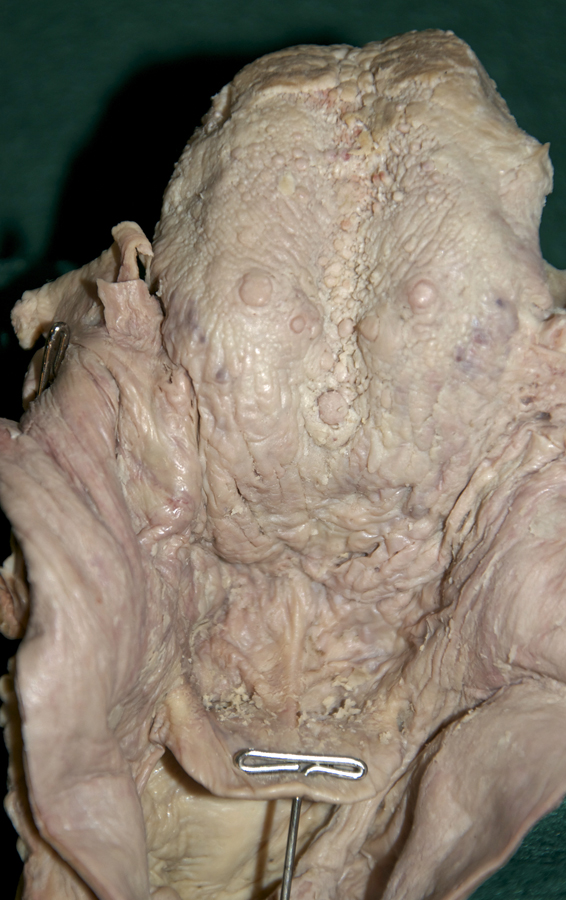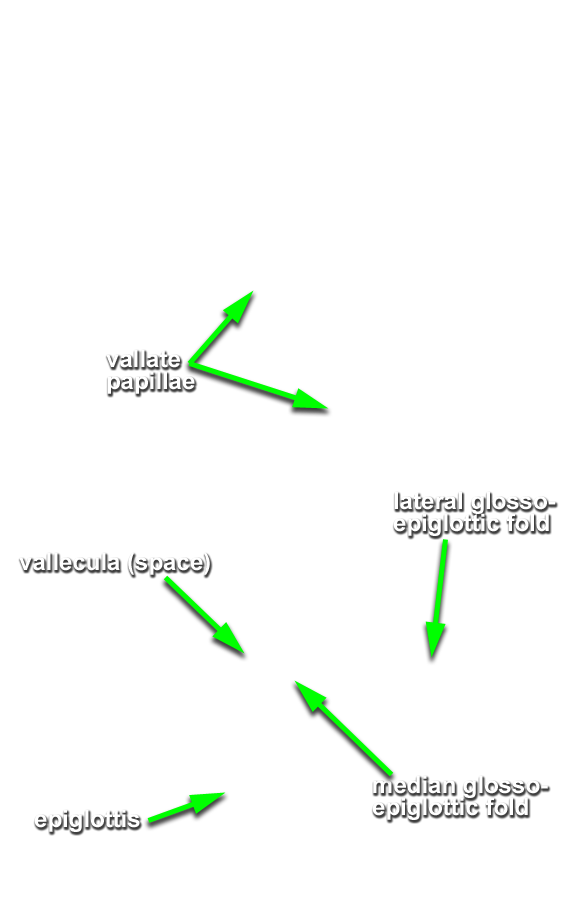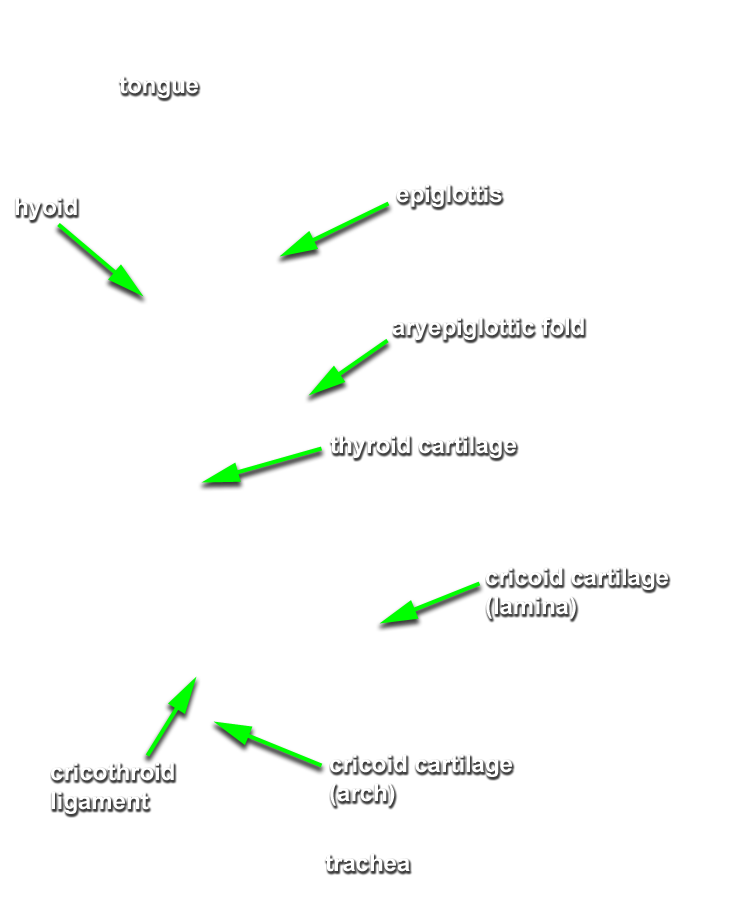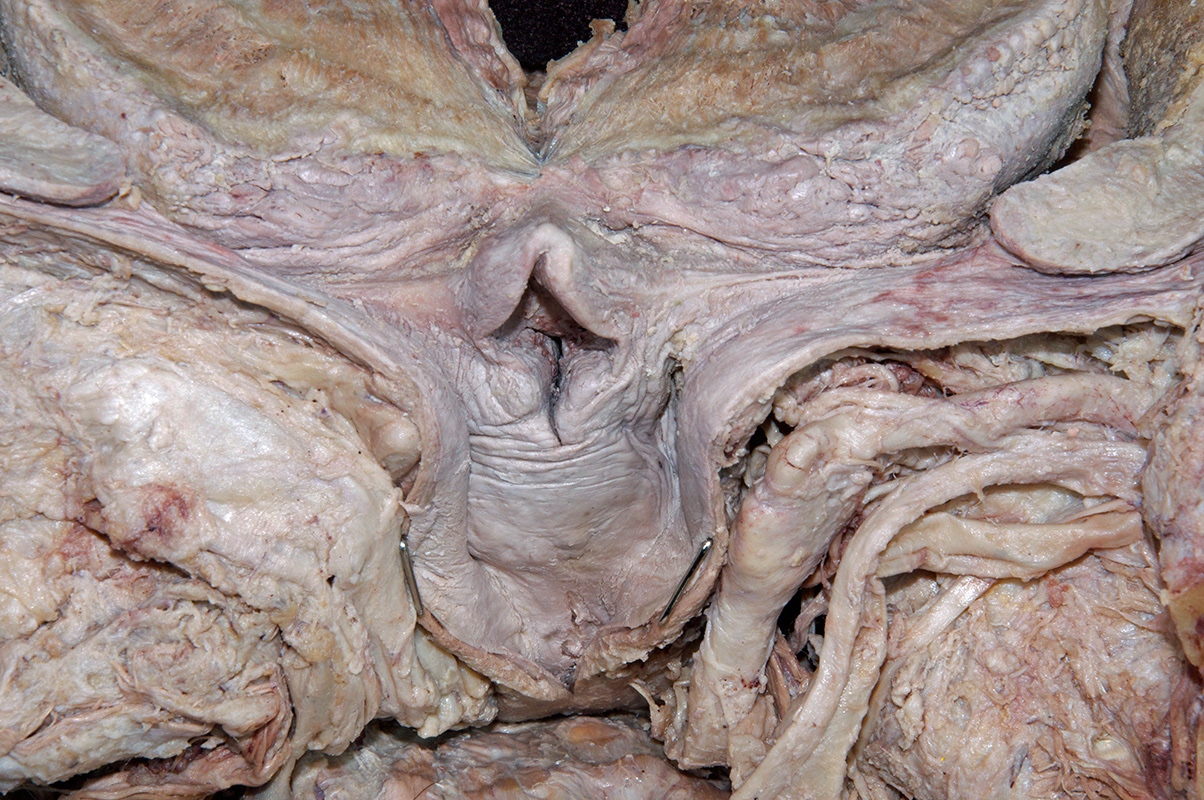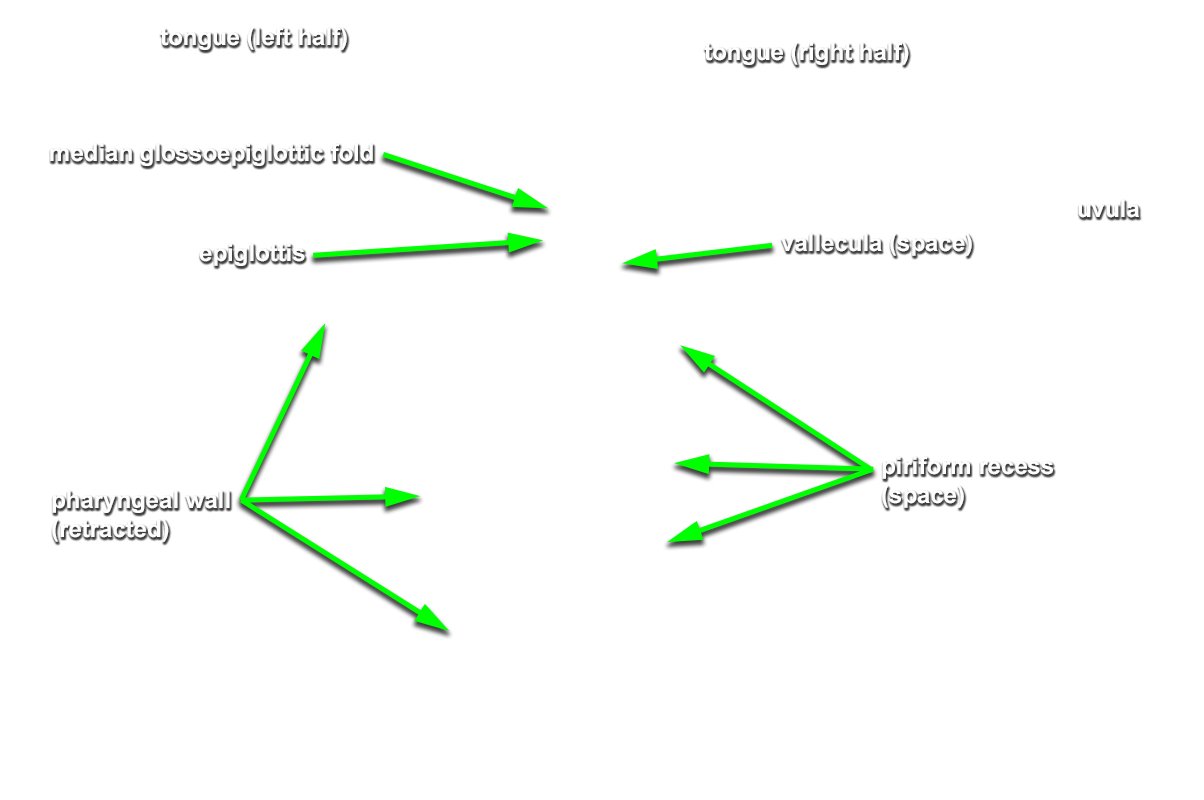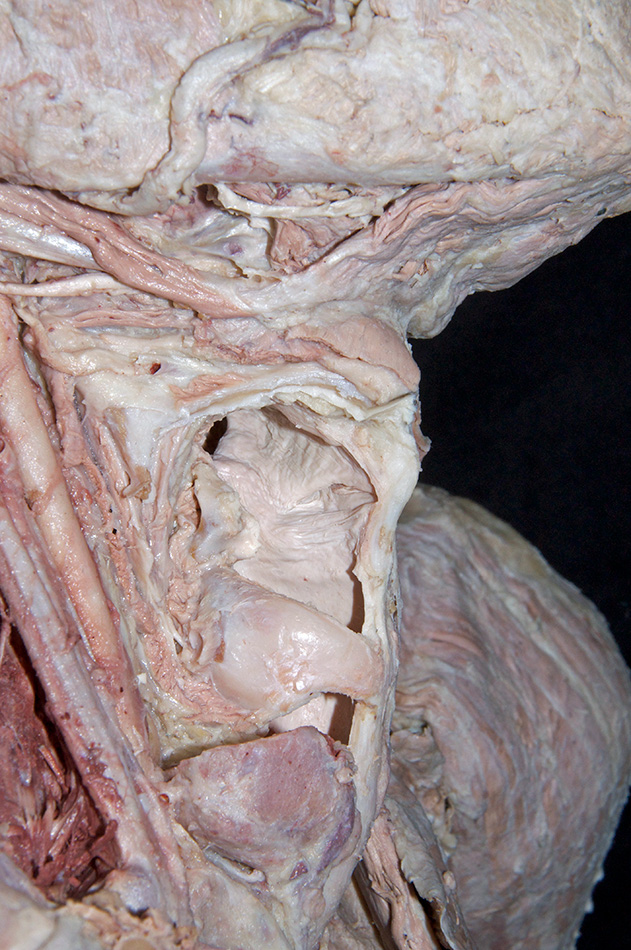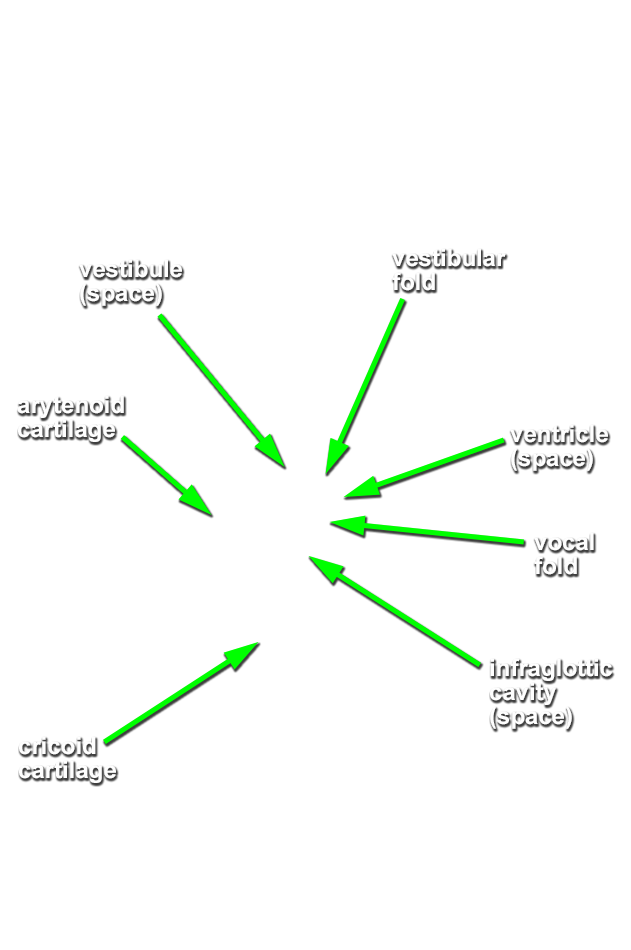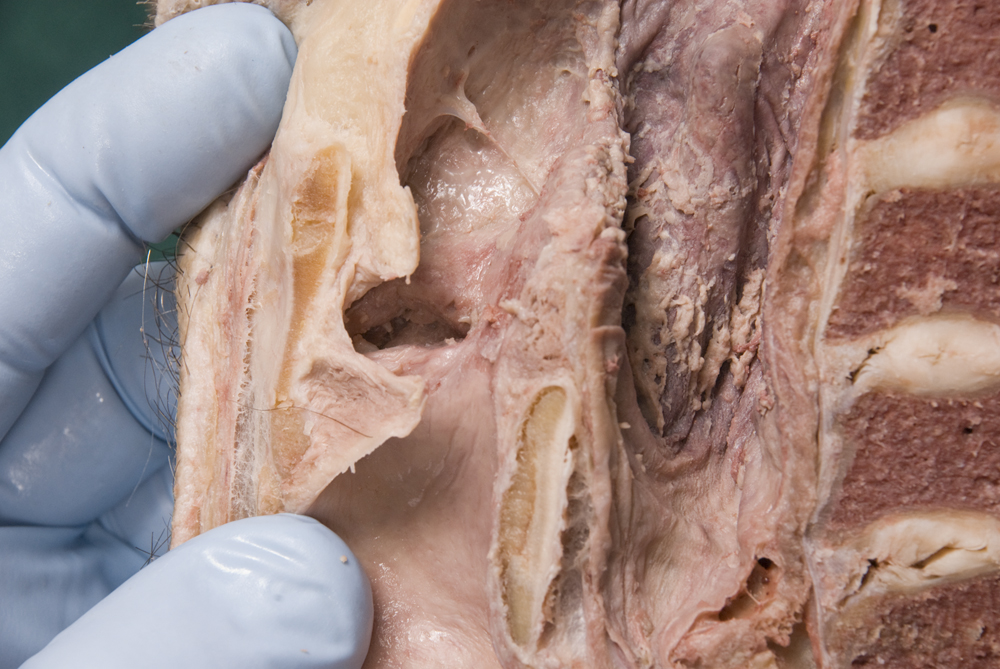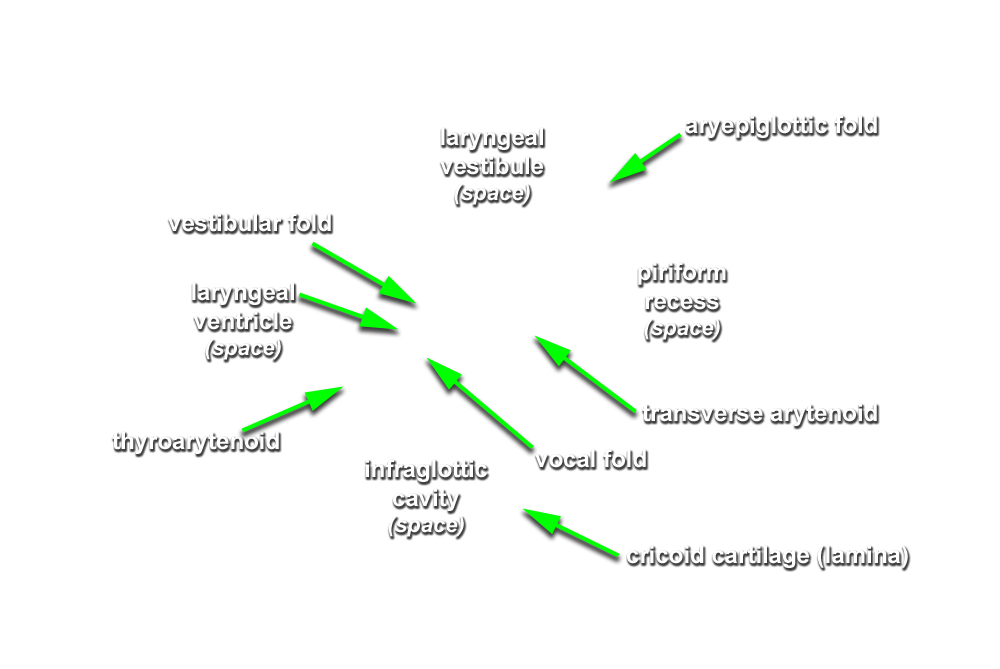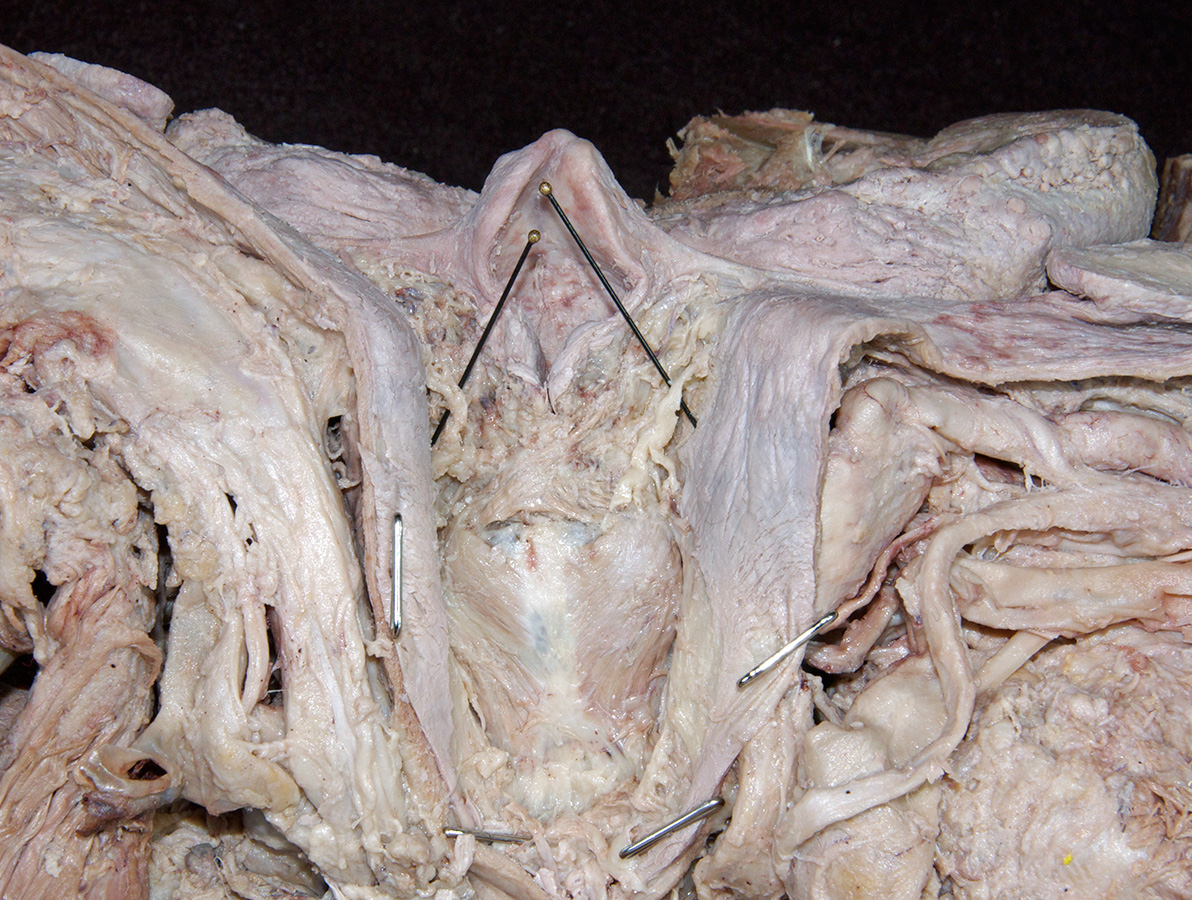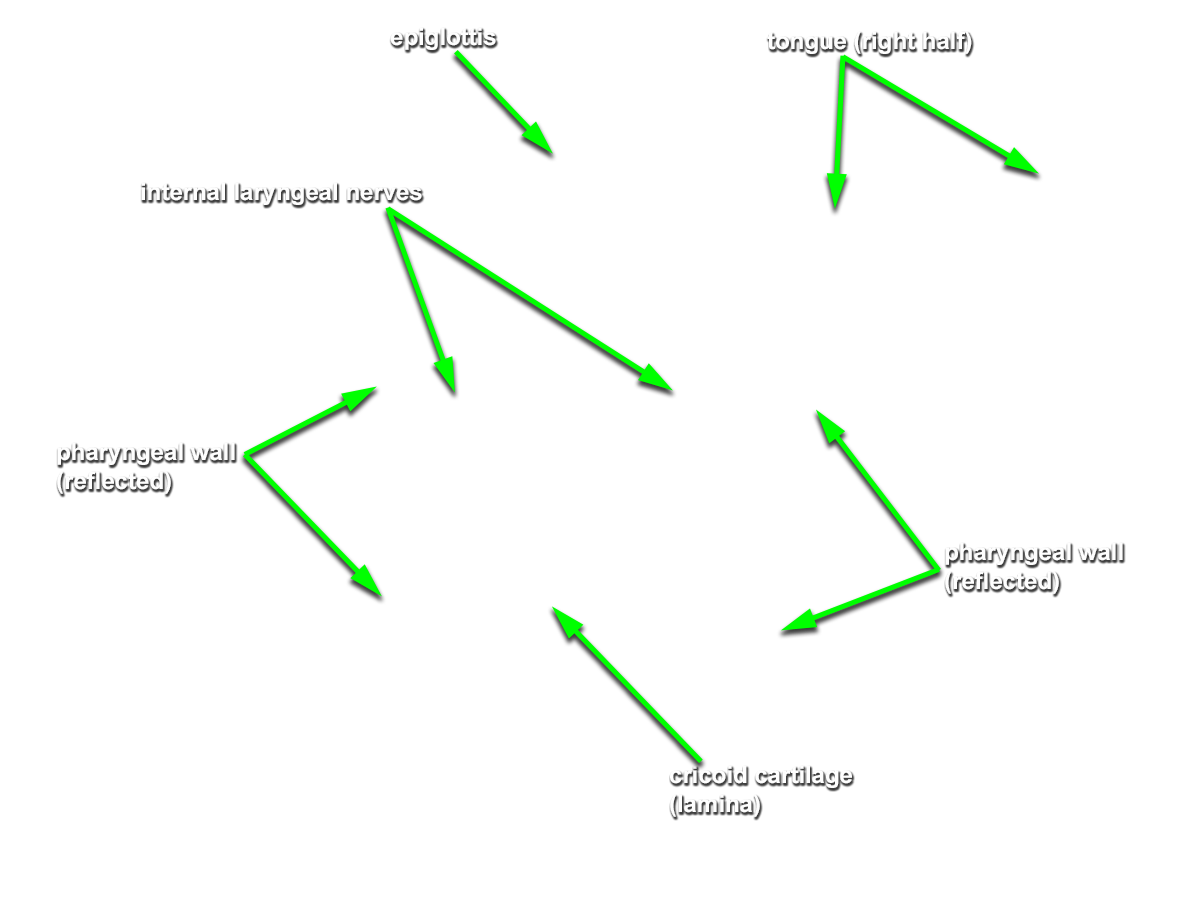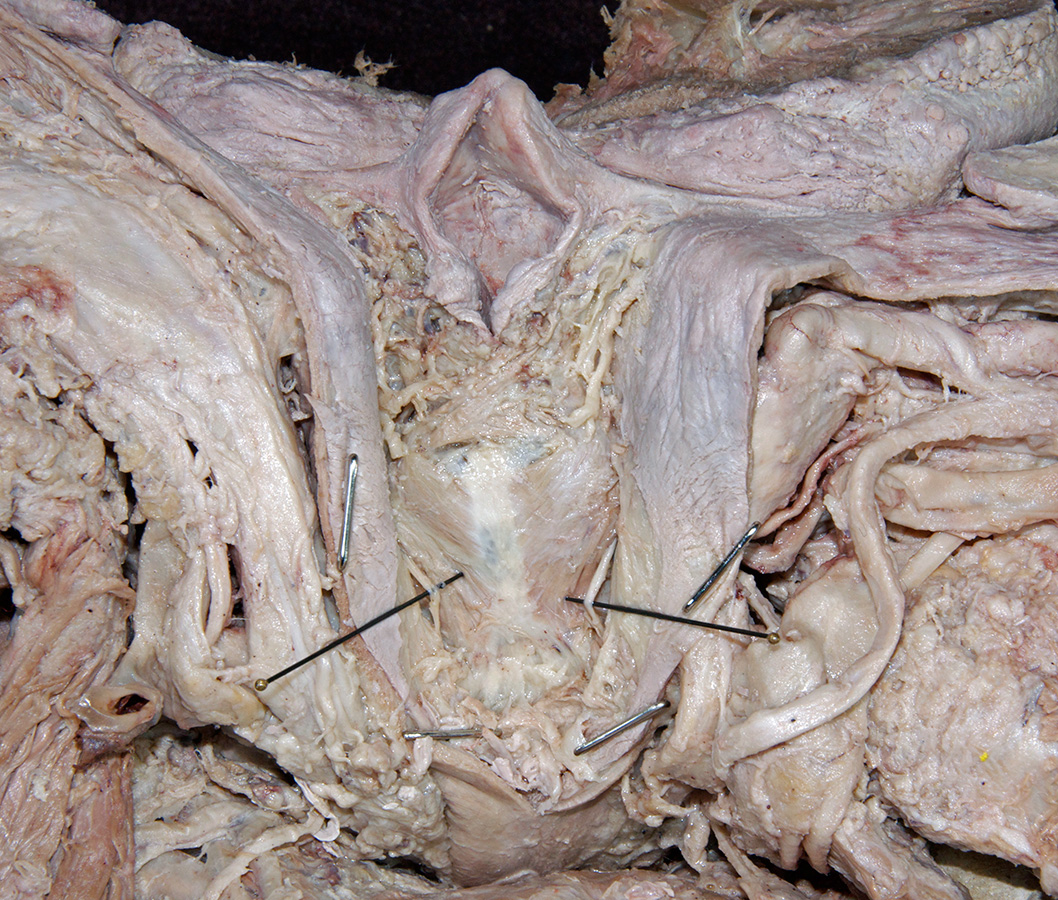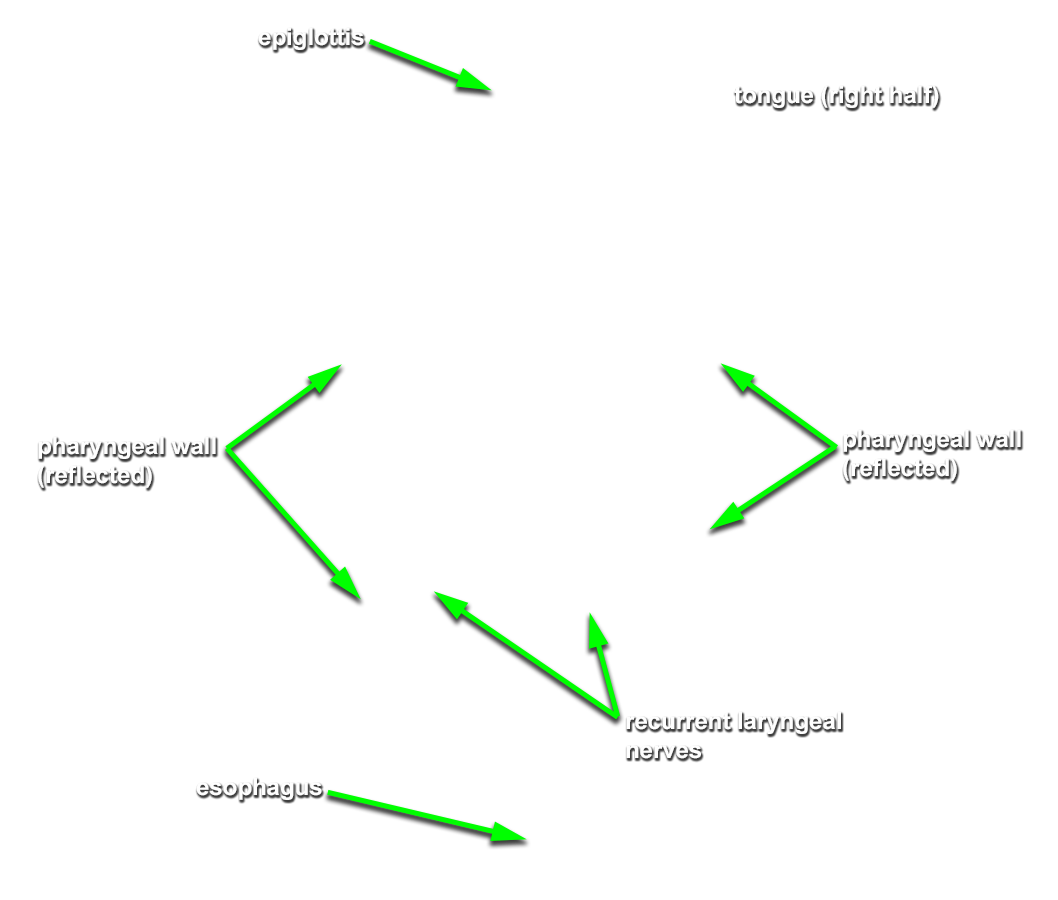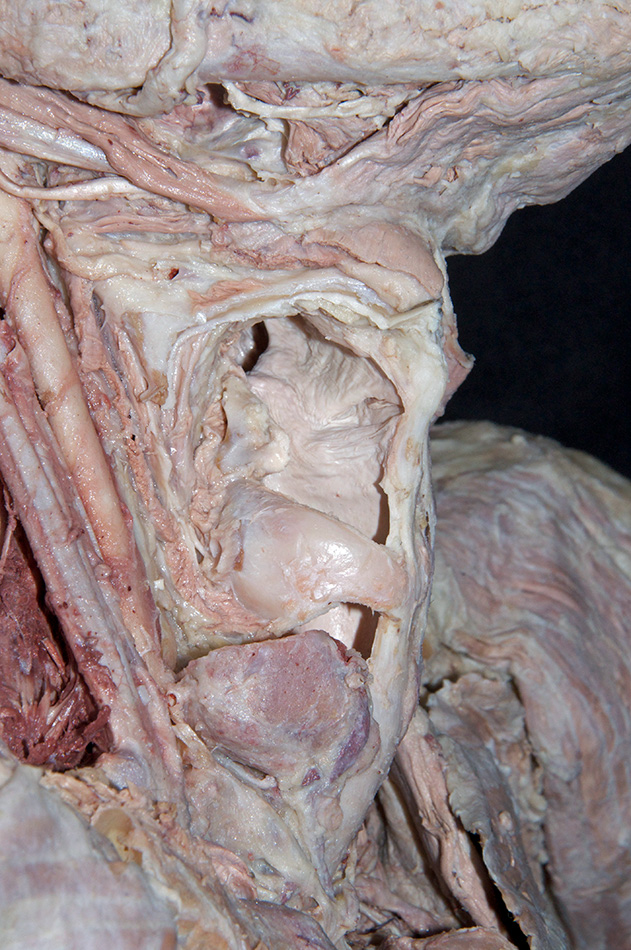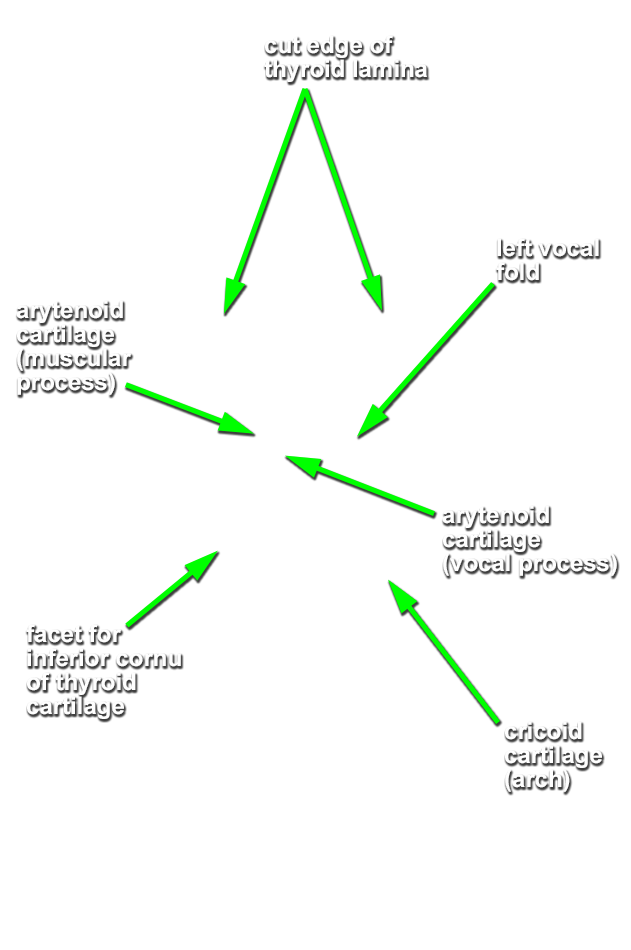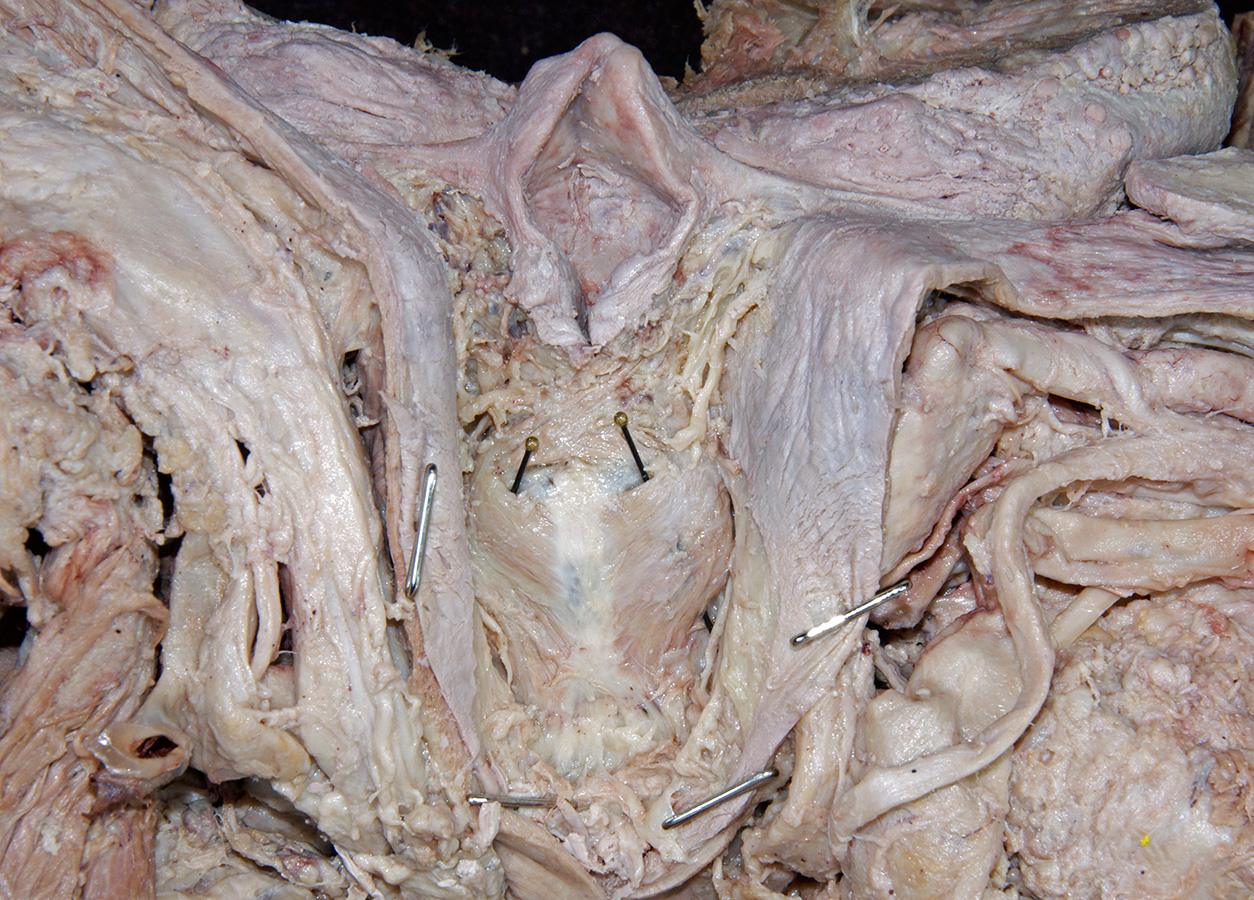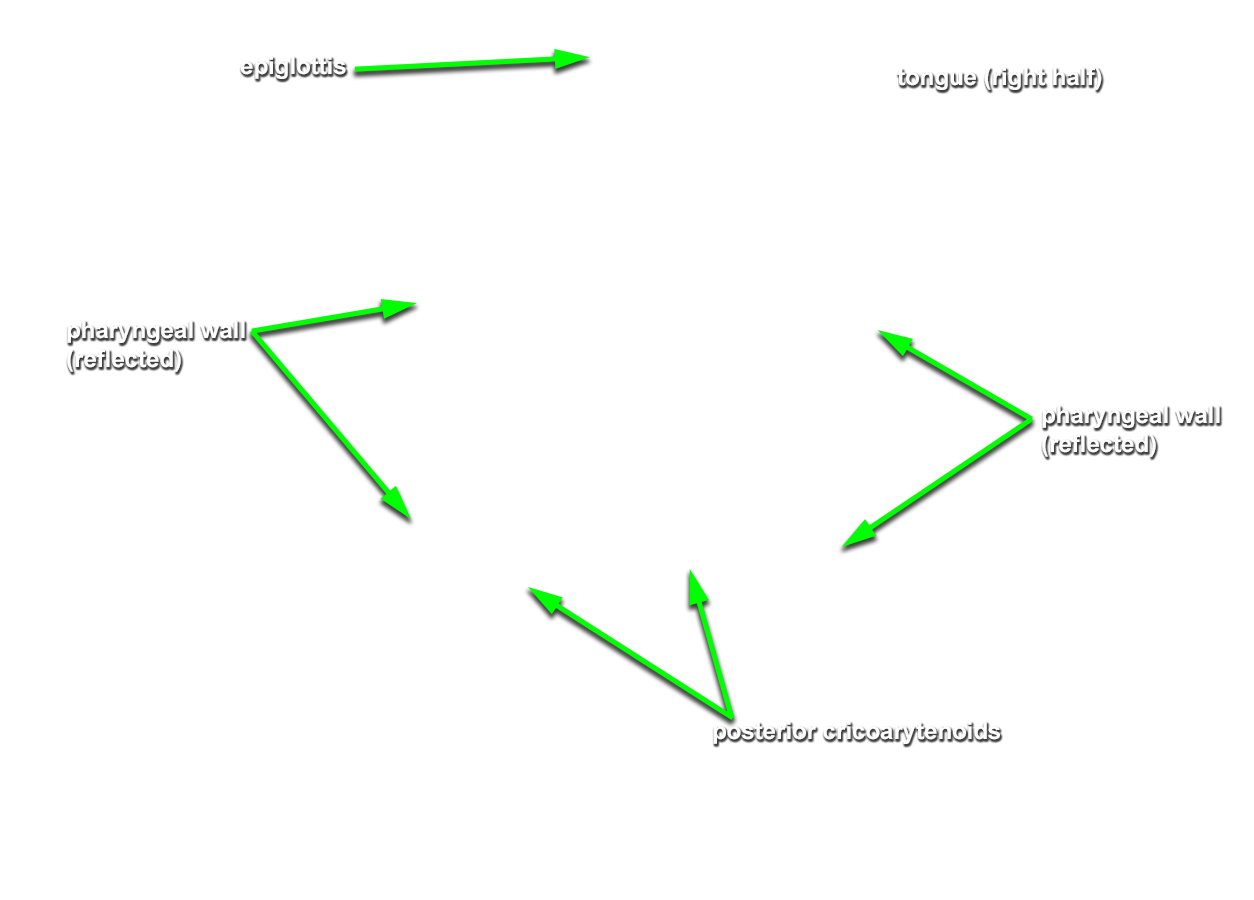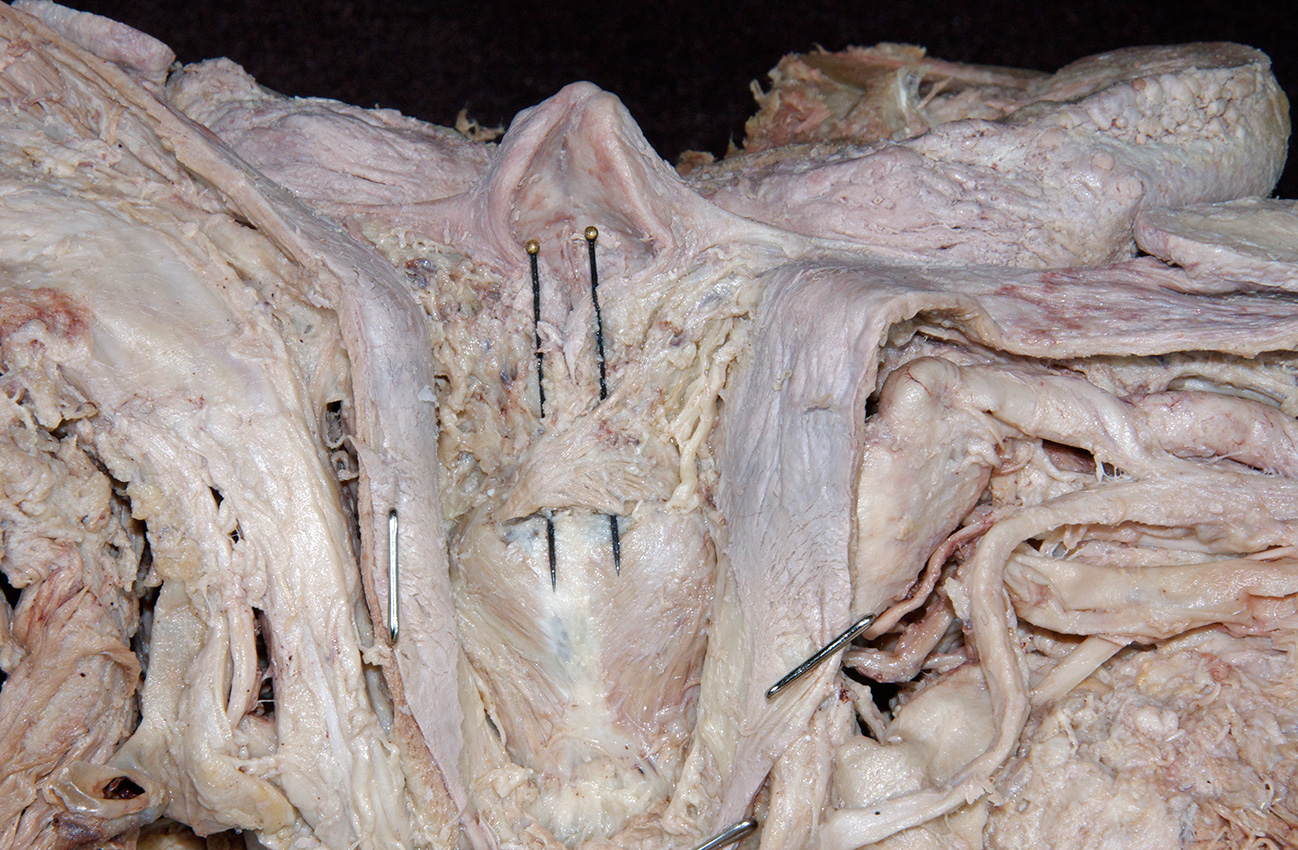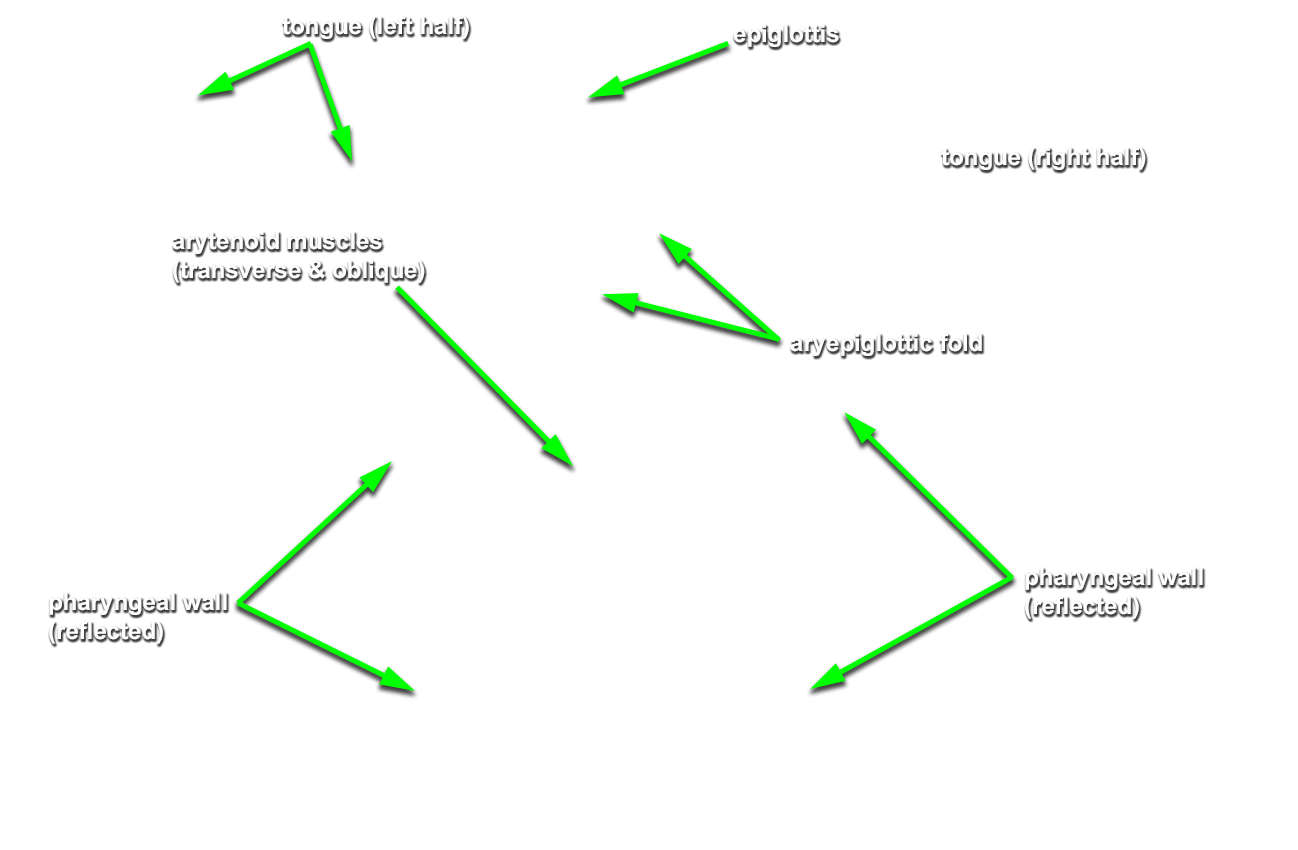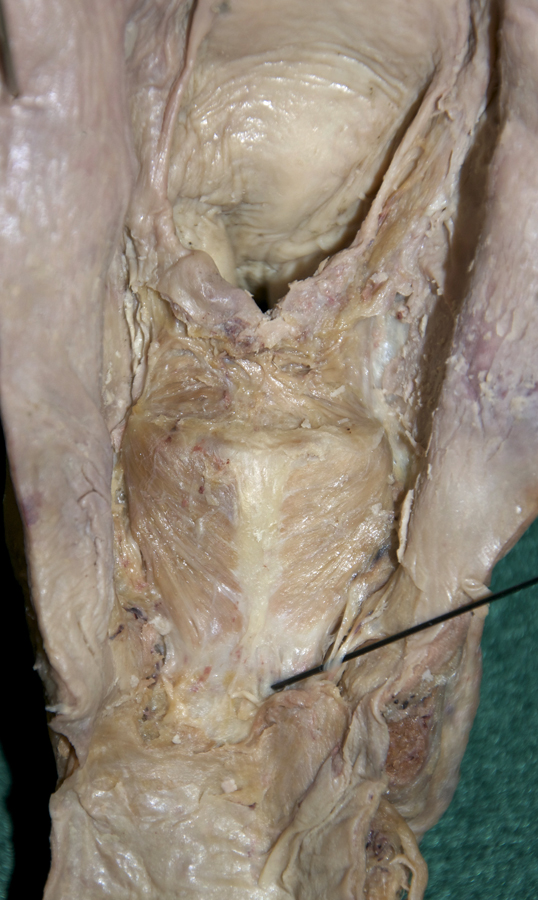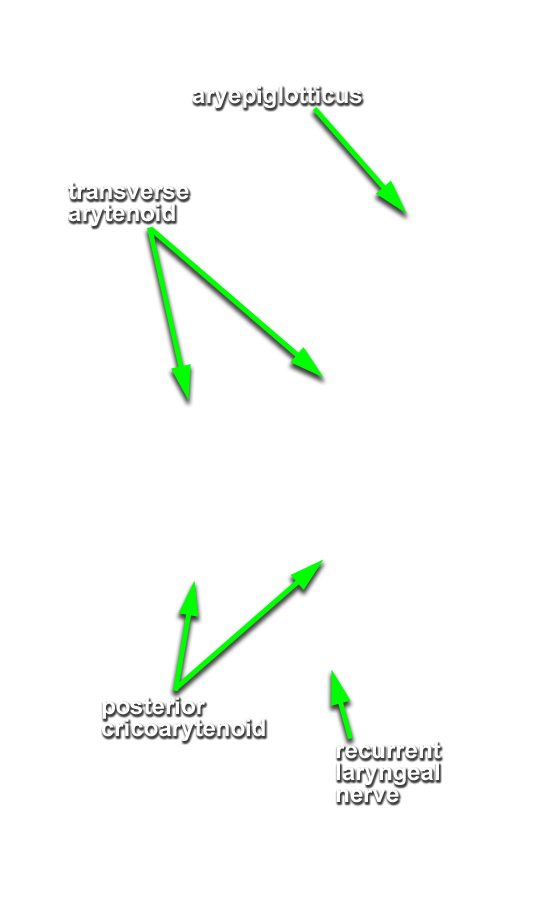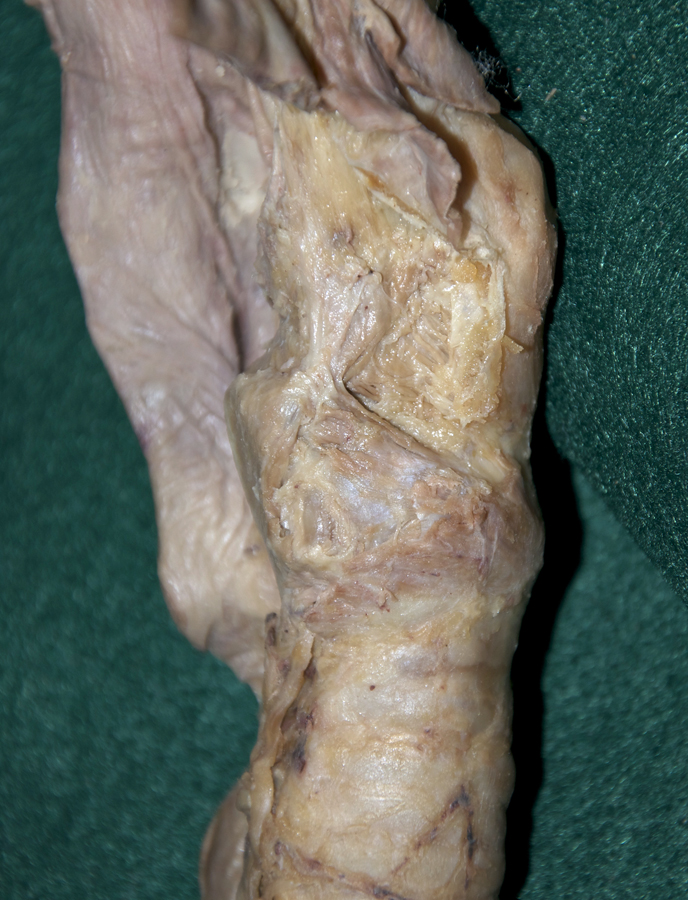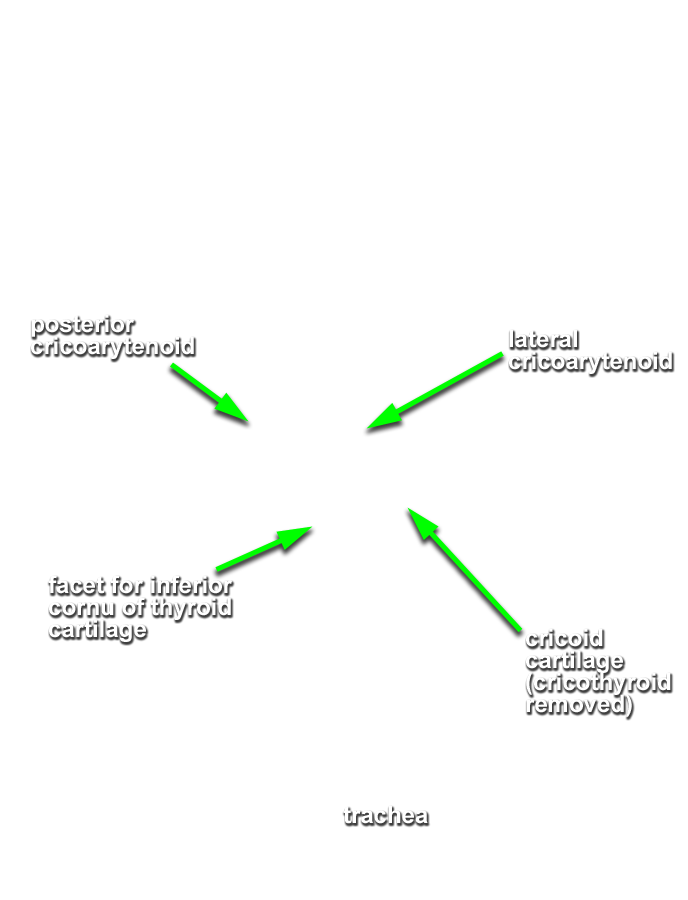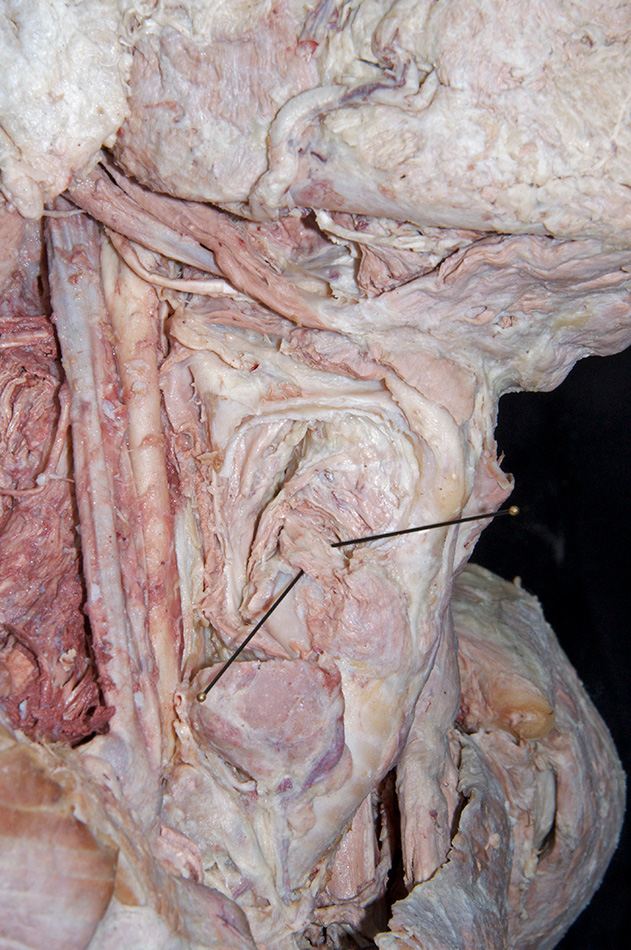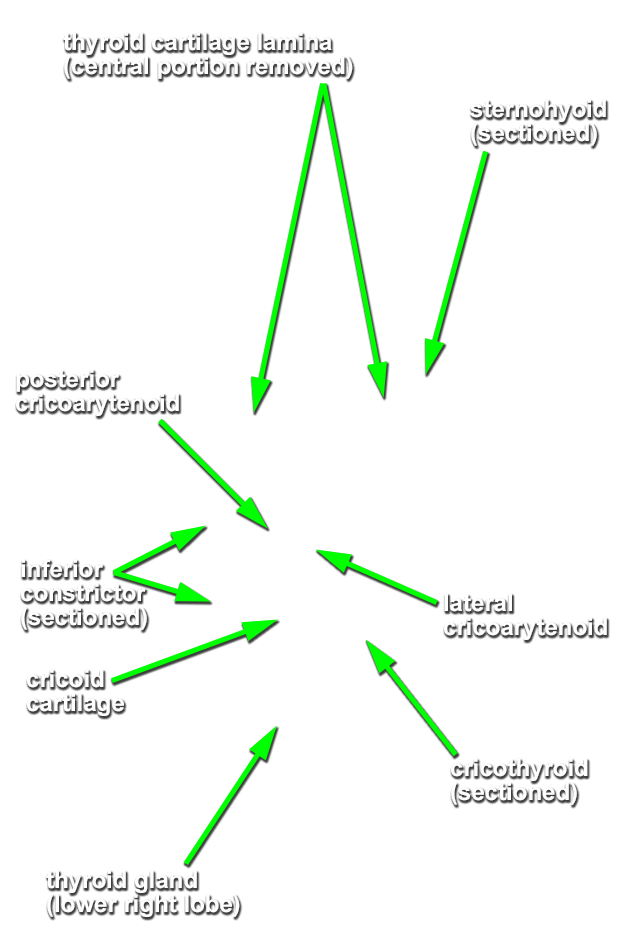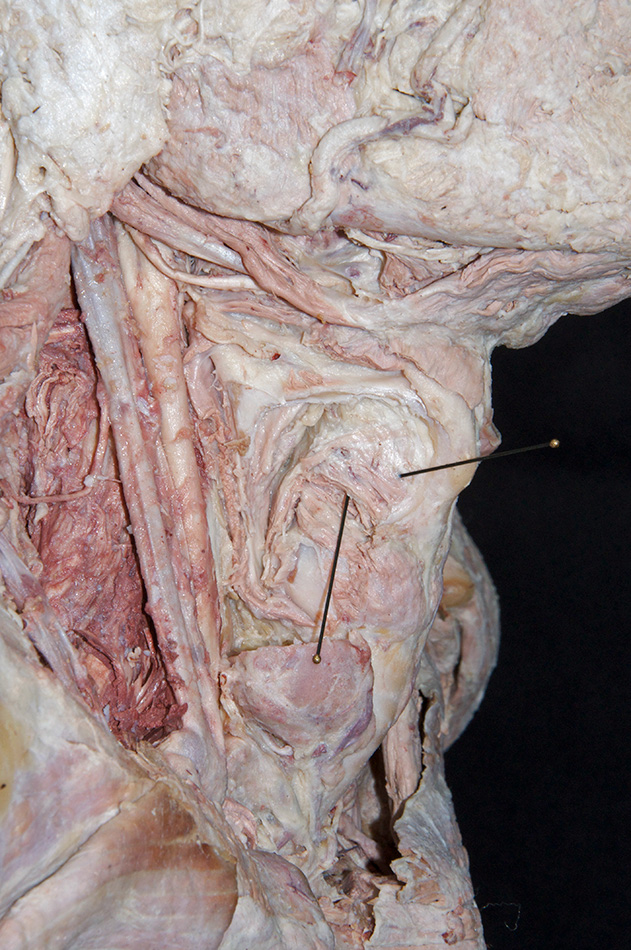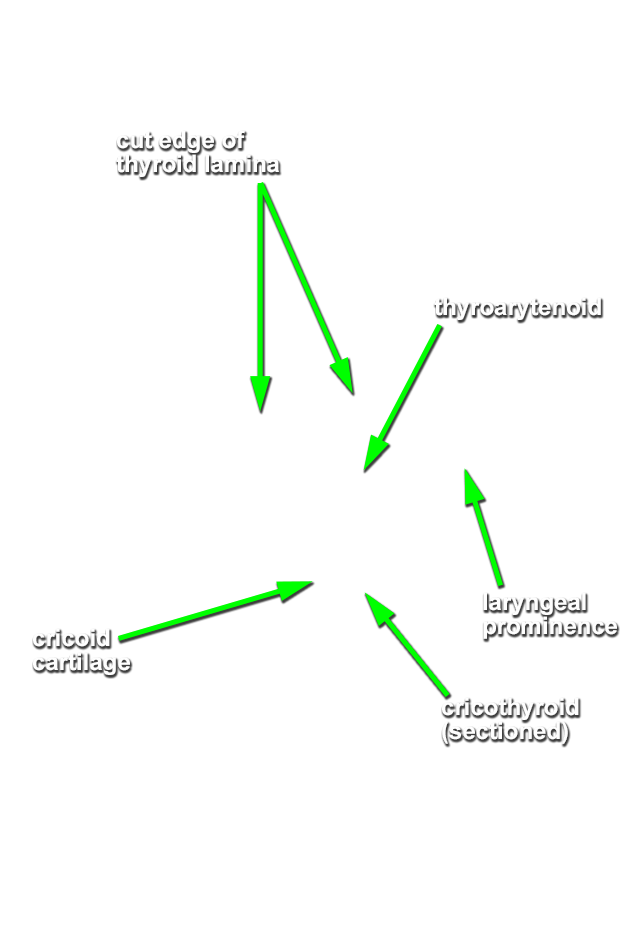Identify the internal surface features and structures associated with the laryngeal pharynx and larynx .
-
(ON BOTH SIDES) Identify the
median and
lateral glossoepiglottic folds,
vallecula,
epiglottis,
aryepiglottic fold,
piriform recess,
laryngeal vestibule,
vestibular fold,
laryngeal ventricle,
vocal fold and
infraglottic cavity. (G 7.49B;N 58 and 66;Gl 38.2 and 39.20)
Important Relationship
- The vallecula is positioned directly anterior to the epiglottis and posterior to the tongue (root).
- The epiglottis is positioned posterior to the tongue (root).
- The piriform recess is positioned lateral to the laryngeal inlet.
- The vocal ligament is positioned anterior to the arytenoid cartilage.
- The vocal fold is positioned inferior to the vestibular fold.
- (ON BOTH SIDES) Carefully strip the mucosa from the piriform recess and identify the internal laryngeal nerve. (G Table 8.10 Posterior View;N 67;Gl 38.34) If you have difficulty finding the nerve, then clamp it with a hemostat externally at the thyrohyoid membrane and palpate the tip of the hemostat. Strip the mucosa at the tip of the hemostat and identify the nerve.
-
(ON THE RIGHT SIDE ONLY) Identify the
lamina of the cricoid cartilage. (G 8.28;N 77;Gl 39.13) Carefully strip the mucosa from the laryngeal pharynx at the posterior border of the lamina of the cricoid cartilage and expose and identify the
recurrent laryngeal nerve. (G Table 8.10 Posterior View;N 80)
Important Relationship
- The thyroid cartilage (laminae) are positioned superior to the cricoid cartilage.
-
(ON BOTH SIDES) Palpate and identify the
arytenoid cartilage. (G 8.28E;N 77;Gl 39.18B) Strip the mucosa from the posterior aspect of the larynx to expose and identify the
posterior cricoarytenoid and
transverse arytenoid muscles. Attempt to identify the
aryepiglotticus muscle. (G Table 8.10 Posterior View;N 78;Gl 38.31C)
Important Relationship
- The arytenoid cartilage is positioned superior to the cricoid (lamina) cartilage.
- (OPTIONAL, ON ONE SIDE ONLY - the side where you cut the infrahyoid muscles), use a small scissors or a small scalpel blade to disarticulate the cricothyroid joint. Blunt disect the thyroid lamina in the lateral and anterior direction. Attempt to identify the cricothyroid, lateral cricoarytenoid and thyroarytenoid muscles. (G Table 8.10 Lateral View;N 78;Gl 39.19)
